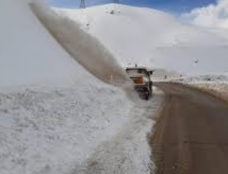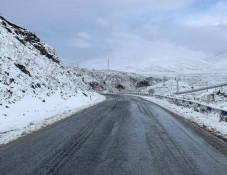
Scientific edition of Russian Empire about Muslim Tatars’ untidy life in modern Azerbaijan territory
Nikolay Kalashev, the supervisor of Geokchay normal two-year school, carried out a large-scale research of the history and life of the Muslim Tatars from the settlement Salyan – situated in the territory of the modern-day Azerbaijani Republic – for “The Collection of Materials to Describe the Terrain and Tribes in the Caucasus” in 1896.
According to the research, the name of the settlement derives from the Persian word “sal”, translated as “salary” and dating back to the reign of Nader Shah, the founder of the Iranian Afsharid dynasty of Turcoman origin. Pointing out the relatively recent history of the settlement, the author writes that “it has no ancient monuments either in the mosques or in the maktabs (schools).”
The description of the locals’ way of life is of special interest. The architectural abilities of the locals are illustrated in the following excerpt, “the houses have one floor and are built of mudbricks with inclined roofs of cane, and the ceilings of the rooms are low, a little higher than a man, this making the air stale and suffocating.” Kalashev also highlights the absence of ovens in the houses and the use of clay fireplaces instead, while the “wrongly fixed doors and windows” had to be opened all the time for ventilation. The exclusively earthen floors resulted in permanent dampness in the houses.
Remarkably, the author also pays attention to the inhabitants’ attitude to their homes and the street. He writes, “the habitable rooms are apparently kept clean and neat, meamwhile the yards and streets are swamped with garbage thrown out of the rooms, and no measures are taken for clearing them. As a consequence, in winter and autumn it becomes impassably filthy around during the rains, and during the other seasons several-inches-high layer of abundant dust covers the ground.”
The author’s description of how the inhabitants of Salyan prepared meals is noteworthy, “The houses commonly do not have kitchens. The meals are cooked in habitable rooms in the fireplace, and in summer in the yard on trivets or special clay roasters on three feet with these feet inverted up. These roasters are round, with at least 5-6 inches’ diameter. They are made of raw clay and are rarely burnt. They are called mangals (roasters),” Kalashev writes.
Noting the chaotic and messy building-up of the surroundings marked with curved streets, the author writes that by 1886 a plan of reconstructing and bringing Salyan to a civilized state had been developed.
“The Collection of Materials to Describe the Terrain and Tribes in the Caucasus” is a large-scale publication of narrative sources carried out by the management of the Caucasus Educational Okrug in 1881-1908. It includes researches and description of the history, life, way of life and ethnographic characteristics of the peoples inhabiting the Caucasus region of the Russian Empire.
Related:
19th century scientific edition of Russian Empire compiled historical data about ancient Erivan
Newsfeed
Videos






























